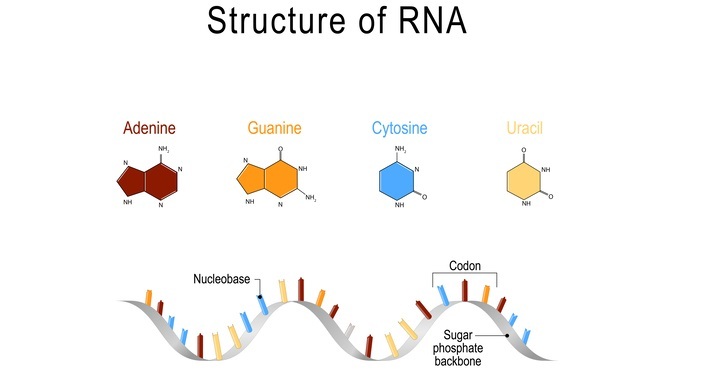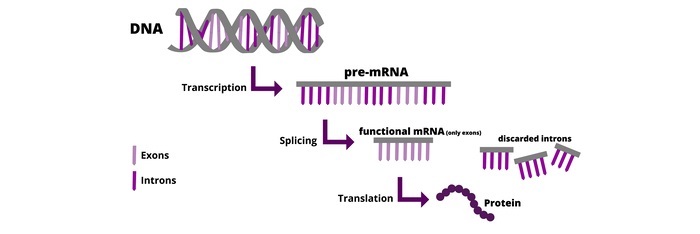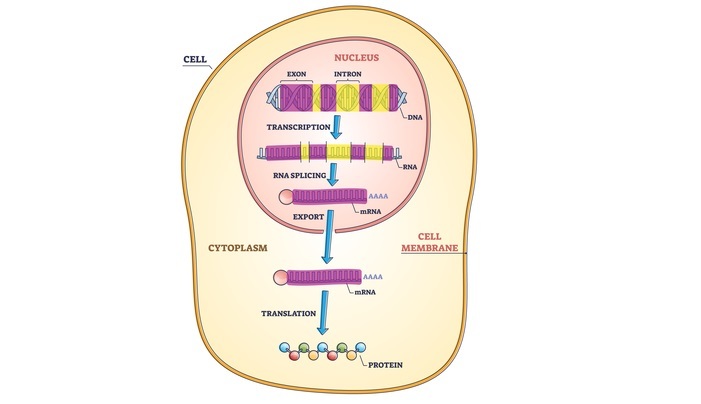
 Data Structure
Data Structure Networking
Networking RDBMS
RDBMS Operating System
Operating System Java
Java MS Excel
MS Excel iOS
iOS HTML
HTML CSS
CSS Android
Android Python
Python C Programming
C Programming C++
C++ C#
C# MongoDB
MongoDB MySQL
MySQL Javascript
Javascript PHP
PHP
- Selected Reading
- UPSC IAS Exams Notes
- Developer's Best Practices
- Questions and Answers
- Effective Resume Writing
- HR Interview Questions
- Computer Glossary
- Who is Who
What are the steps involved in RNA Processing?
Introduction
As one of the central molecules of life, RNA plays a vital role in the transfer of genetic information from DNA to proteins. While DNA serves as a blueprint for building an organism, RNA acts as a messenger that carries the genetic information from the DNA to the ribosomes, where it is translated into proteins.
RNA processing is an essential step in this process that involves several key stages, which we will explore in detail below.

What is RNA?
RNA stands for Ribonucleic Acid, a type of molecule that carries genetic information from DNA to proteins. Like DNA, RNA is composed of nucleotides, which are the building blocks of genetic information.
However, RNA is typically single-stranded, while DNA is double-stranded. RNA also contains a different sugar molecule, ribose, whereas DNA has deoxyribose.
There are several types of RNA, including messenger RNA (mRNA), transfer RNA (tRNA), and ribosomal RNA (rRNA), each with a specific function in protein synthesis.

What is RNA Processing?
RNA processing is a crucial step in the production of functional RNA molecules.
In eukaryotic cells, RNA processing occurs after transcription, the process of copying DNA into RNA.
During RNA processing, pre-mRNA is modified to produce mature mRNA, which is then exported from the nucleus to the cytoplasm, where it is translated into proteins.
RNA processing involves several stages, including capping, splicing, and polyadenylation, which we will explore in more detail below.
Types of RNA Processing
There are three main types of RNA processing: capping, splicing, and polyadenylation.
Capping
During capping, a modified guanine nucleotide is added to the 5' end of the pre-mRNA molecule. This cap helps protect the mRNA from degradation and is also necessary for efficient translation.
Splicing
In splicing, introns (non-coding regions of the pre-mRNA) are removed, and exons (coding regions) are joined together to form a mature mRNA molecule. This process is carried out by a complex called the spliceosome, which recognizes specific sequences at the boundaries of the introns and exons.

Polyadenylation
In polyadenylation, a long chain of adenine nucleotides is added to the 3' end of the mRNA molecule. This poly(A) tail helps stabilize the mRNA and is also involved in regulating its translation.
Structure of RNA Processing
RNA processing occurs in the nucleus of eukaryotic cells, where the pre-mRNA molecule is transcribed from DNA. After transcription, the pre-mRNA undergoes a series of modifications to produce mature mRNA, which is then exported to the cytoplasm for translation.
The process of RNA processing is carried out by a complex machinery of proteins and RNA molecules, which recognize specific sequences in the pre-mRNA molecule and catalyze the necessary modifications.

Importance of RNA processing
RNA processing is a critical step in the production of functional proteins. Without RNA processing, the pre-mRNA molecule would contain non-coding regions (introns) that would interrupt the coding sequence, leading to non-functional proteins.
It also helps regulate gene expression by controlling the splicing of exons and the stability of mRNA molecules. Mutations in genes involved in RNA processing can lead to a variety of diseases, including cancer and genetic disorders.
Unknown Facts of RNA Processing
Some of the facts include -
Recent research has uncovered several new insights into RNA processing. For example, scientists have discovered that RNA processing is not a one-time event but is a dynamic process that continues even after the mRNA molecule is exported to the cytoplasm.
Researchers have also found that RNA processing can be regulated by small RNA molecules called microRN (RNA) and small interfering RNA (siRNA), which can target specific mRNA molecules for degradation or inhibit their translation.
Additionally, studies have shown that RNA processing can play a role in the development and function of the nervous system, with mutations in genes involved in RNA processing linked to neurodevelopmental disorders.
FAQs
Q1. What is the role of the poly(A) tail in mRNA?
Ans. The poly(A) tail helps stabilize the mRNA molecule and is also involved in regulating its translation. The length of the poly(A) tail can affect the stability and translation efficiency of the mRNA.
Q2. Can RNA processing be regulated?
Ans. Yes, RNA processing can be regulated by a variety of mechanisms, including alternative splicing, which can generate multiple mRNA isoforms from a single pre-mRNA molecule. RNA processing can also be regulated by microRNAs and siRNAs, which can target specific mRNA molecules for degradation or inhibition of translation.
Q3. What is the role of RNA processing in disease?
Ans. Dysregulation of RNA processing has been implicated in a variety of diseases, including cancer, neurodegenerative disorders, and viral infections. Mutations in genes involved in RNA processing can lead to abnormal mRNA splicing and the production of non-functional proteins, contributing to disease pathogenesis.
Q4. What is the difference between pre-mRNA and mRNA?
Ans. Pre-mRNA is the initial transcript that is synthesized from DNA during transcription. It contains both coding regions (exons) and non-coding regions (introns). mRNA is the mature transcript that is produced after RNA processing, in which introns are removed and exons are joined together to form a continuous coding sequence.

